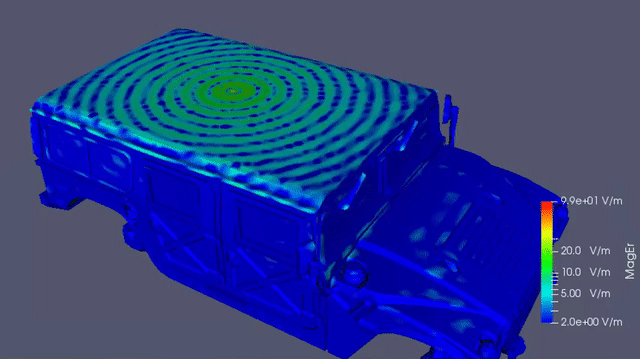Linear Polarization Antennas in Radio and Wireless Communication Systems
Key Takeaways
-
Polarization is the path followed by the tip of the electric field vector present in the electromagnetic signal in accordance with time.
-
Linear polarization is the most common polarization in antennas. In a linear polarization antenna, the electric field vector traces a line as time progresses.
-
Linear polarization antennas can be classified into vertical polarized, horizontal polarized, and slant polarized antennas.
Polarization is connected with antennas in radio and wireless communication systems. Antenna types available for signal transmission and reception include linear polarization, circular polarization, and elliptical polarization. Let’s take a closer look at the polarization in antenna theory, linear polarization antenna, and its types.
Antenna Polarization
Polarization is the most important specification to consider when choosing an antenna. The two-dimensional wave propagation property of electromagnetic signals necessitates polarization in antennas. For effective signal transmission and reception, the polarization of the transmitter antenna and receiver antenna must match. Matching the polarization of the two antennas considerably reduces signal losses.
Polarization in antenna theory is associated with the electric field vector it radiates. Polarization is the path followed by the tip of the electric field vector present in the electromagnetic signal in accordance with time. It can also be described as the locus traced by the tip of the time-varying electric field vector concerning a fixed point.
The direction of the electric field concerning the direction of signal propagation determines the polarization in the antenna. When the electric field is vertical to the propagation direction of the electromagnetic signal, it’s called vertical polarization. Conversely, if the electric field is horizontal to the propagation direction, it’s called horizontal polarization.

Types of Polarization
According to the shape traced by the time-varying electric field vector, polarization in the antenna is classified into three types, namely:
- Circular polarization antenna: In circular polarization antennas, the tip of the electric field vector traces a circle. These are common in satellite communication, as it reduces propagation anomalies, ground reflections, etc. Two types include right-hand circular polarization antennas and left-hand circular polarization antennas.
- Elliptical polarization antenna: When the electric field vector traces an ellipse, such antennas are called elliptically polarized antennas.
- Linear polarization antenna: The linear polarization antenna is classified when the electric field vector traces a line.
Linear Polarization Antennas
Linear polarization is the most common polarization in antennas. As stated earlier, in a linear polarization antenna, the electric field vector traces a line as time progresses. There is only one component of the electric field in such a linearly polarized antenna. If there are two components, then the phase difference between them will be either 0° or 180°. The linear polarization antenna radiates entirely in a single plane that contains the direction of propagation.
Linear polarization antennas are subdivided into three categories:
-
Vertically Polarized Antenna
A linear polarization antenna with an electric field directed perpendicular to the earth’s surface is called a vertically polarized antenna. Therefore, it is characterized by a low angle of radiation close to the earth’s surface. A vertical polarization antenna with a single vertical element can radiate the electromagnetic signals equally in the horizontal plane. Examples of vertically polarized antennas are the whip antennas in automobiles and antennas in the AM radio broadcasting towers.
-
Horizontally Polarized Antenna
A linear polarization antenna radiates horizontally polarized electromagnetic signals. In a horizontal polarization antenna, the electric field is parallel to the earth’s surface. An example of communication systems using horizontal polarization antennas is television.
-
Slant Polarized Antenna
A slant polarized antenna is a linear polarization antenna where radiation is between vertical and horizontal polarization. Either vertical or horizontal polarization antennas can be used for receiving signals transmitted by a slant polarized antenna. Typically, radiation angles of either +45° or -45° are taken from the reference plane in slant polarized antennas.
The choice of polarization of the antenna can bring significant differences in antenna performance and the overall performance of a communication system. A linear polarization antenna is the most suitable antenna in general radio, mobile, and short-range wireless communication systems.
Cadence software can help in designing polarized antennas for your communication systems. Subscribe to our newsletter for the latest updates. If you’re looking to learn more about how Cadence has the solution for your next project, talk to us and our team of experts.